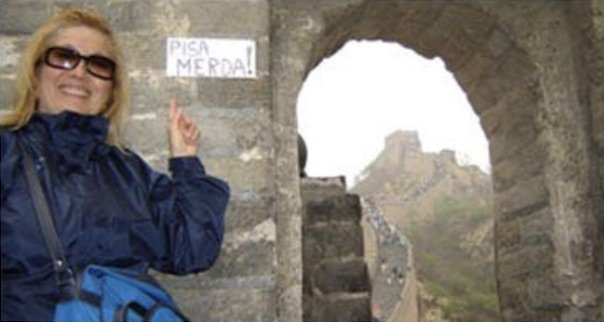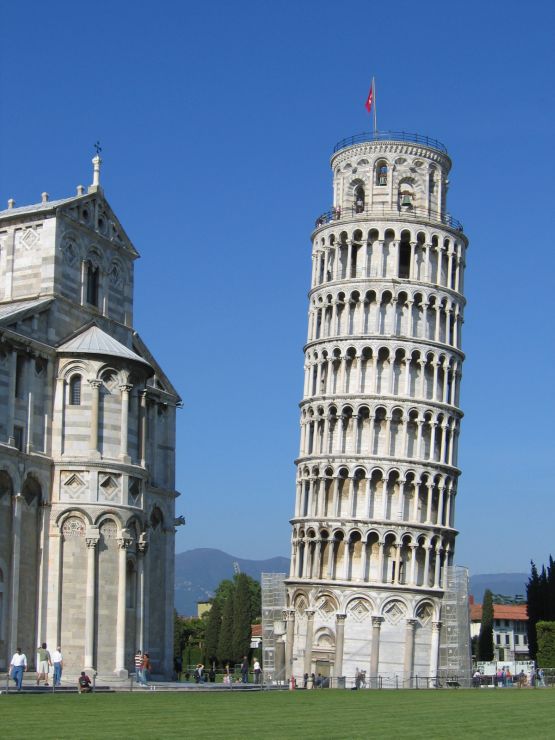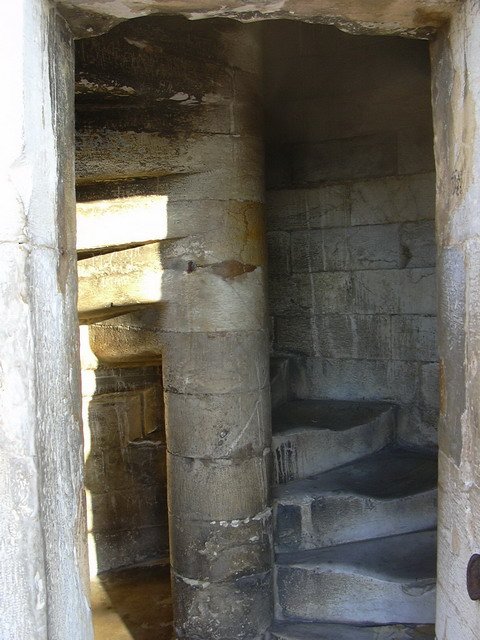
The Lucchesi (see people from the Tuscan town of Lucca) claim authorship of the above proverb, except for the architect part, as they were constantly at war with the Pisans. The Livornesi (see people from the Tuscan coastal city of Livorno) also claim authorship as their Pisan lords would go door to door in Livorno collecting taxes. Florentines (I think you get it) instead claim authorship because they simply do not like the Pisans.
Whatever the origin or reason, there is clearly quite a bit of antipathy directed at Pisa from all sides! In fact, Pisa is part of two significant Tuscan “hate triangles” – Florence hates Pisa and Siena; Pisa, in turn, hates Lucca and Livorno. That’s a lot of hate! Moreover, the Pisan response to the Lucchese/Livornese/Florentine proverb is “Che Dio ti accontenta!” – “may God grant your wish”, in other words, “may someone in your family die!”
Most of these cities still hate each other today, although they no longer remember why. It is very common to see the words Pisa Merda – “Pisa S**t” written on street and bathroom walls, on traffic signs, in soccer stadiums, even tattooed onto various body parts throughout Tuscany (see below).

https://pisamerda.wordpress.com/top-10/
Florentines take particular pride in telling the world how bad Pisa is by writing Pisa Merda as they travel throughout the world, and there have been sightings on the Great Wall of China (see below) and at the top of Machu Picchu!!!!! (see https://pisamerda.wordpress.com/top-10/) Lucky that we have not sent Florentines to the moon…

https://pisamerda.wordpress.com/top-10/
This public smearing (pun intended) of Pisa is as much a process of self-aggrandizement as it is of externalized animosity. In other words, if they look bad, we look better. And in Italy, this phenomenon of excessive zeal or loyalty to one’s city is called campanilismo – literally, “bell towerism”. The cathedral bell tower of each city serves as a symbol of nationalistic pride, much as a flag, or symbol or logo might today for a nation or professional sports franchise.
So how exactly must a Pisan feel knowing that their cathedral bell tower is what I like to call the greatest architectural disaster since Babylon! (see image above)
The “Leaning Tower of Pisa” is nothing more than the cathedral bell tower of Pisa. (see below) It stands 56m tall and is presently 3.9m out of plumb. Consider that Florence cathedral bell tower is 92m tall and perfectly straight, but no one seems to care about Florence cathedral bell tower! I believe that had Giotto, who was the original architect in Florence, known that 4 million people/year would visit Pisa simply to see its crooked bell tower he may have incorporated a bit of a slant as well!

By Florian Hirzinger – http://www.fh-ap.com – Own work, CC BY-SA 4.0, https://commons.wikimedia.org/w/index.php?curid=39171135
Fortunately for him, we do not know the name of the original architect of the Leaning Tower of Pisa.
The foundation stone was laid for the tower on August 9, 1173, and two major mistakes were immediately made. The first was that the tower would be built on an insufficient foundation of less than 3m of dry masonry. The second mistake was that the architect was about to load 10kg/cm2 of masonry on to swampish alluvial soil that allows for 1kg/cm2. To use a sophisticated analogy, try to imagine driving a wooden stake into mud…. Work on the tower stopped after 10 years and at the height of the 3rd ring of arcades because the entire structure had sunk 30-40cm into the ground and leaned about 5cm out of plumb.

By Alkarex Malin äger – Own work, CC BY-SA 3.0, https://commons.wikimedia.org/w/index.php?curid=36259
One would imagine that Pisan authorities might reassess the whole project after watching their tower sink a foot and half in the ground and start to lean… but no sir, they kept at it.
Ninety-two years later work would resume. Three more arcade stories were added, with the south-side, or side-of-the-lean, columns made a full 2 inches taller than their counterparts on the other side. The hope was that the distortion would at least correct the lean visually. But as more weight was loaded, the greater the lean became, reaching almost a full 1m out of plumb… and then work stopped again for the next 60 years.
In 1350, they simply added the belfry and called it a day, not realizing that the lean of the tower would increase by an average of 1.2mm/year…. By 1992, the lean had surpassed the 5m mark and the critical point where structural stress put the entire tower at risk. 600 tons of lead weights were immediately placed on the north side of the tower to prevent the lean from progressing further. (see below) Steel cable girdles were placed around the central cylinder of the tower and anchored to an emergency “catch” system should the tower in fact cede.
Authorities scrambled to find a less visually invasive solution than the massive pile of lead ingots. Drilling began under the tower on its north side and 60m3 of earth were slowly removed from below the tower. This process gradually created the space necessary for the tower to slowly lean back on itself and recover a full 50cm, equaling its lean three centuries ago in the 18th century.
This last intervention was completed in 2001 and proved to be highly successful. Incredibly, to celebrate, Pisan authorities decided to allow tourists to start climbing the tower again for the meager cost of EUR 15,00/person (see below). Now, although a few hundred tourists/day may not represent a threat to the structural conservation of the tower, millions of climbers per year for the past 17 years definitely will…

By Lonewolf1976, CC BY-SA 3.0, https://commons.wikimedia.org/wiki/File:Leaning_tower_staircase_6th_floor.jpg
Maybe the Lucchesi, Livornesi and especially Florentines had it right after all….




















